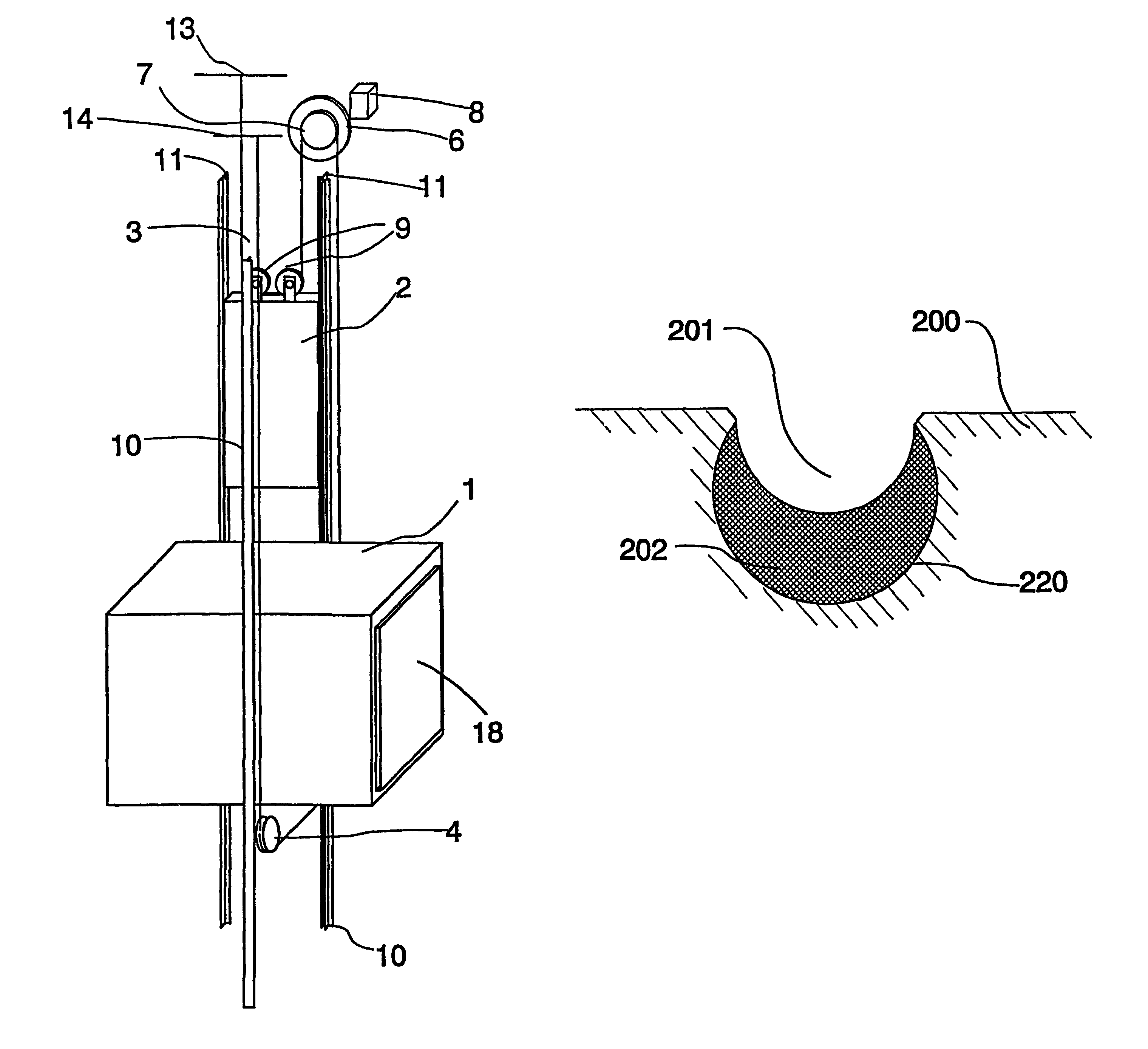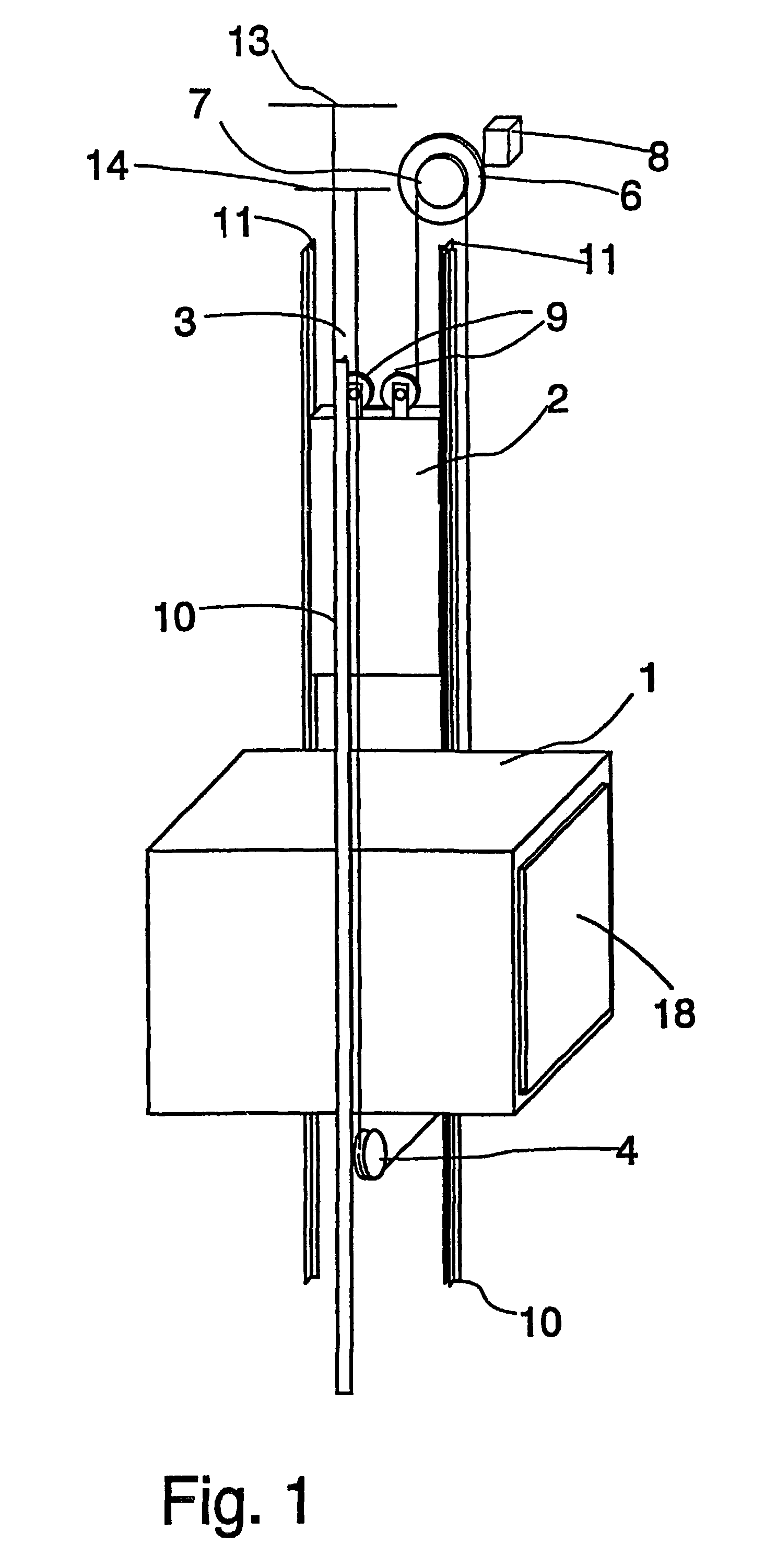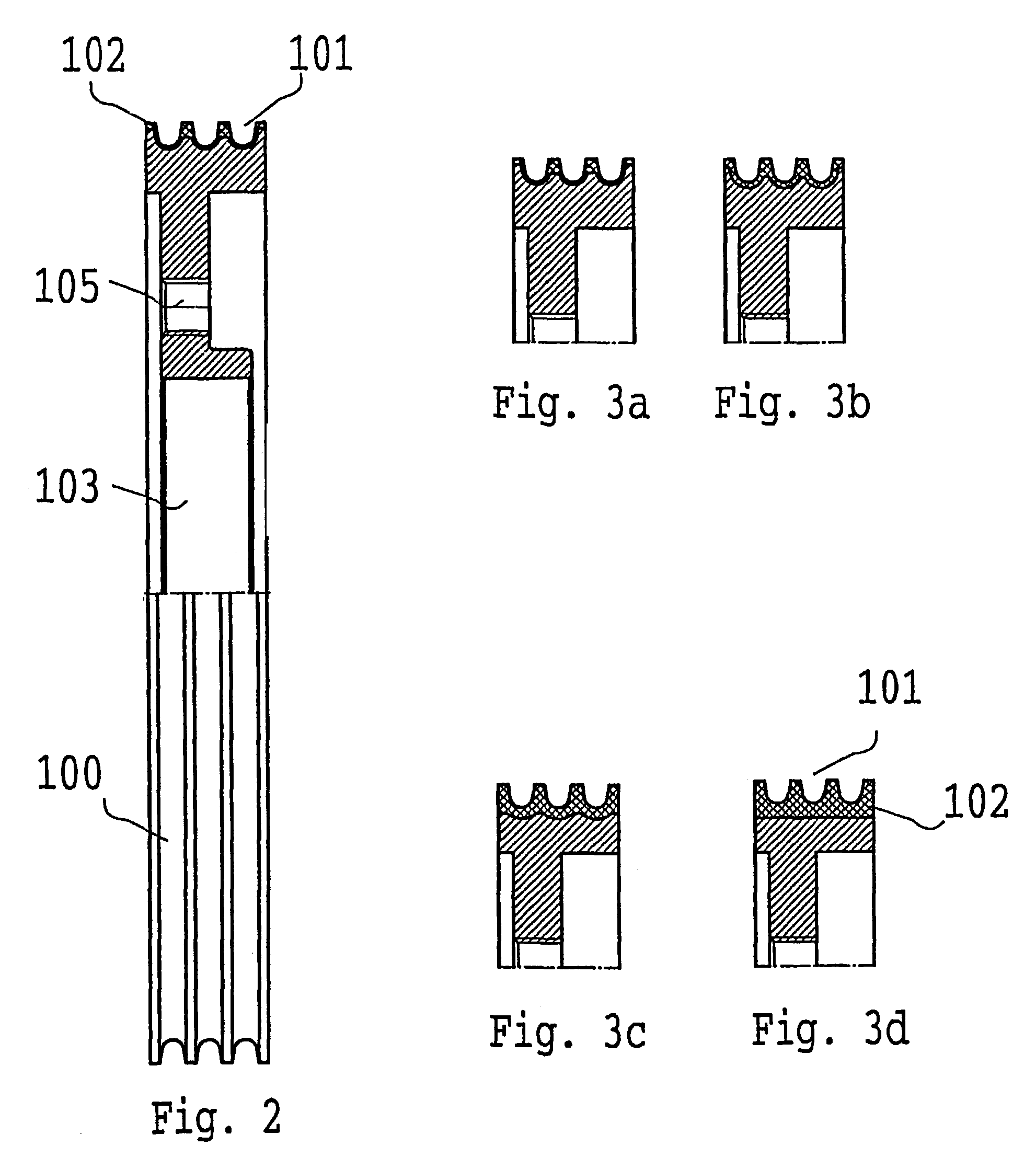Elevator and traction sheave of an elevator
a technology of traction sheave and elevator, which is applied in the field of elevator, can solve the problems of corrosion of steel wire ropes and the friction coefficient of metallic traction sheave used in elevators, insufficient in itself to maintain the required grip, and damage to coatings, etc., and achieves excellent grip. , the effect of reducing ropes
- Summary
- Abstract
- Description
- Claims
- Application Information
AI Technical Summary
Benefits of technology
Problems solved by technology
Method used
Image
Examples
Embodiment Construction
[0031]FIG. 1 is a diagrammatic representation of the structure of an elevator. The elevator is preferably an elevator without machine room, in which the drive machine 6 is placed in the elevator shaft, although the invention is also applicable for use in elevators with machine room. The passage of the hoisting ropes 3 of the elevator is as follows: One end of the ropes is immovably fixed to an anchorage 13 located in the upper part of the shaft above the path of a counterweight 2 moving along counterweight guide rails 11. From the anchorage, the ropes run downward and are passed around diverting pulleys 9 suspending the counterweight, which diverting pulleys 9 are rotatably mounted on the counterweight 2 and from which the ropes 3 run further upward to the traction sheave 7 of the drive machine 6, passing around the traction sheave along rope grooves on the sheave. From the traction sheave 7, the ropes 3 run further downward to the elevator car 1 moving along car guide rails 10, pas...
PUM
 Login to View More
Login to View More Abstract
Description
Claims
Application Information
 Login to View More
Login to View More - R&D
- Intellectual Property
- Life Sciences
- Materials
- Tech Scout
- Unparalleled Data Quality
- Higher Quality Content
- 60% Fewer Hallucinations
Browse by: Latest US Patents, China's latest patents, Technical Efficacy Thesaurus, Application Domain, Technology Topic, Popular Technical Reports.
© 2025 PatSnap. All rights reserved.Legal|Privacy policy|Modern Slavery Act Transparency Statement|Sitemap|About US| Contact US: help@patsnap.com



